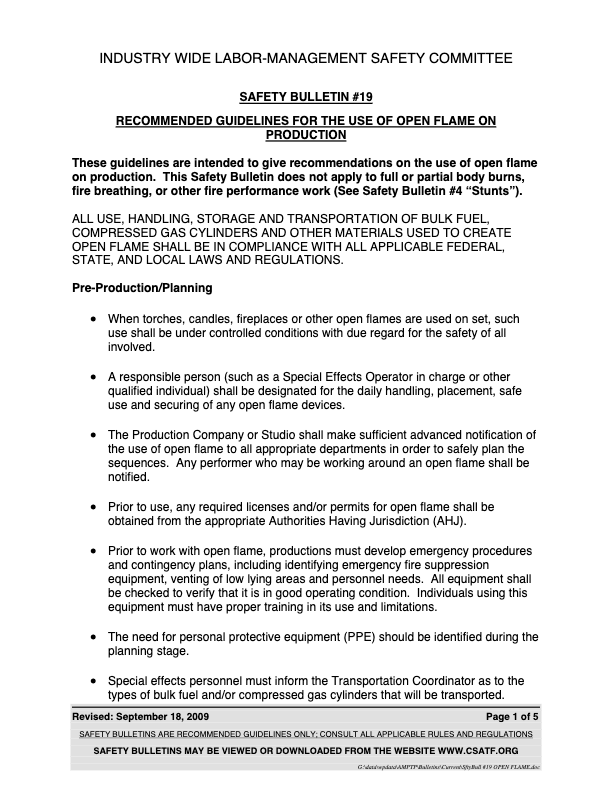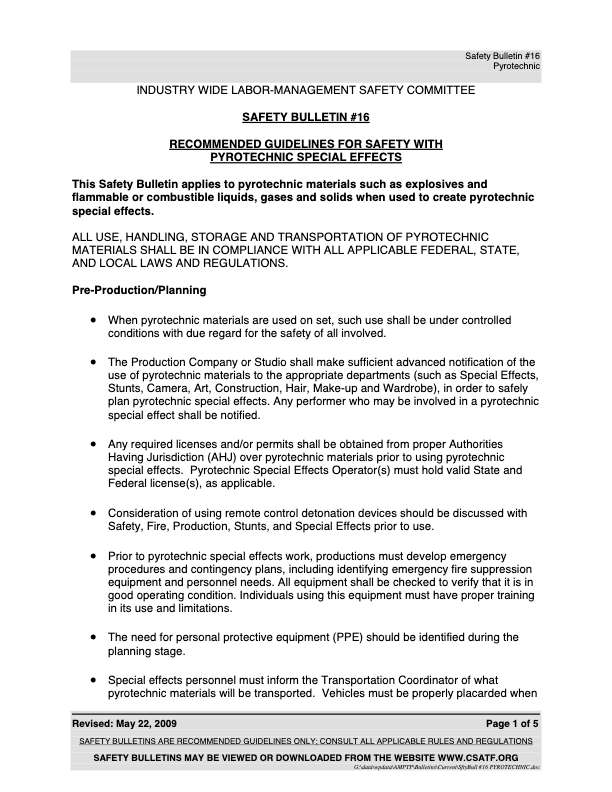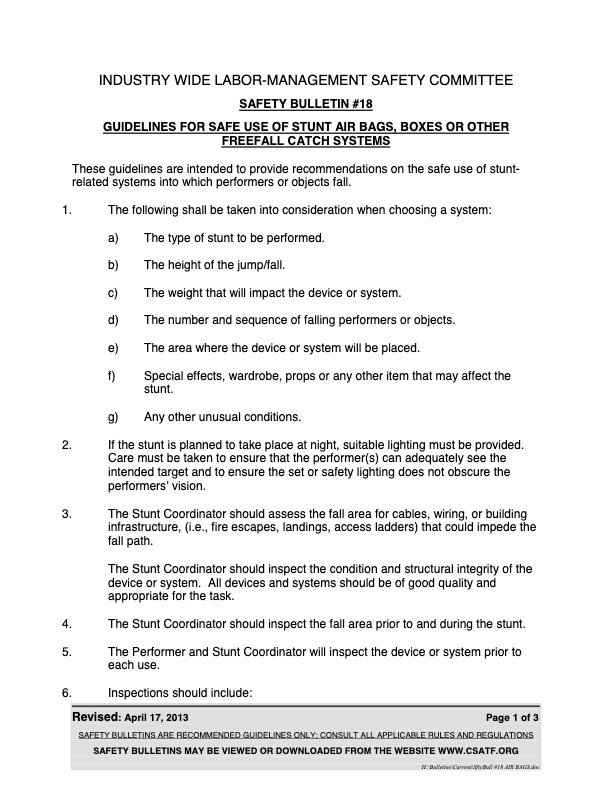Safety Bulletin

Guidelines
The following recommendations and guidelines are intended to give general guidance on the preparation, safe set-up, and performance of stunt sequences.
- A stunt coordinator and/or qualified individual is in charge of all aspects of the physical stunt, including script review, planning, site selection, preparation, testing, rehearsal, modification and recommendation of the qualified personnel and equipment to be utilized to perform the stunt.
- When a Producer requires a performer to perform a scripted or non-scripted stunt or stunt related activity, an individual qualified by training and/or experience in planning, setting up and/or performance of the type of stunt involved shall be engaged and present on the set. No performer without the requisite training and/or experience shall be required to perform a stunt or stunt related activity without an opportunity for prior consultation by the performer with such qualified individual.
- The performer must consent to participation in the stunt prior to its performance.
- No individual should be required to work with an animal that a reasonable person would regard as dangerous in the circumstances unless an animal handler or trainer qualified by training and/or experience is present.
- The qualified licensed special effects person who will be rigging and firing an explosive charge (including squibs) on a performer shall be allowed prior consultation with the stunt coordinator and performer.
- The Producer or Producer’s representatives on the set or location should comply with requests and requirements for safety equipment that is generally accepted in the industry for the safe and proper performance with stunts.
- Equipment provided by the Producer (for example, automobiles, motorcycles, or wagons) shall be in suitable repair for the safe and proper performance of the stunt and presented in time to review such equipment prior to the execution of the stunt (Cal-OSHA, Title 8 requirement).
- Advance notice is to be given to stunt personnel in order to plan a safe stunt. If changes are made to these plans, the Producer is to provide sufficient time to safely accommodate the changes.
- An on-site safety meeting, including all participants and others involved, must precede the performance of all stunts. This meeting should include a “walk- through” or “dry-run” with the stunt coordinator and/or effects people. An understanding of the intended action, possible deviations, and authority to abort should be made clear. Before rolling cameras, should any substantive change become necessary, the First Assistant Director will again call all persons involved in the stunt to another meeting to confirm everyone’s understanding and agreement to said change(s).
- Wardrobe, prosthetics, wigs, lenses and/or other related equipment required to be worn by the stunt individuals should be presented in sufficient time for evaluation and to determine if such items will impact the execution of the stunt or stunt sequence. Final safety approval rests with the stunt coordinator and/or qualified individual.
- The stunt coordinator and/or qualified individual shall determine whether safety requires the exclusion of non-essential crew from the stunt area. Perimeter control should be established and maintained. Traffic control procedures shall be reviewed, and special attention should be paid to driving sequences where unauthorized personnel could enter the area. The stunt coordinator and/or qualified individual should be involved in safe placement of cameras, camera operators and all essential crew.
- Communications: The stunt coordinator and/or qualified individual will coordinate with the designated production representative and implement a plan for communications between the participants. The chosen methods of communication should reflect the conditions and circumstances at the scene.
Note: It is recognized that there can be unforeseen or unique situations which might require on-site judgment differing from these guidelines. Such judgment should be made in the interests of the safety of cast and crew.




